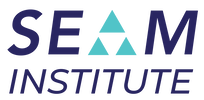SEAM encompasses |
TheoryDefines a radical approach to organizational change and an organization's management and economic performance. |
InterventionThe process of improving organizational performance with the help of external consultants. |
ManagementImproving management practices through the use of SEAM management tools |
45 years of practice and research have proven SEAM interventions and management tools to be extremely effective. The key to SEAM’s effectiveness is the calculating and reducing hidden costs that normal accounting overlooks. The savings in time and money are channeled into developing a human potential in the organization, which leads to increased employee engagement and organizational effectiveness.
Cornerstones of SEAM theory
Socio-economic Focus
Socio-Economic practice means paying attention to the human side of the workplace, as well as to the economic side. The traditional mental model of management is skewed towards the economic side, or profits. However, focusing only on the economic side leads in the long-term to a reduction of human engagement, organizational productivity, and profits.
SEAM restores the balance by encouraging leaders to invest in people, who in turn take care of their organization.
SEAM restores the balance by encouraging leaders to invest in people, who in turn take care of their organization.
Human potential
People are the most valuable asset of any organization. While many organizations may claim this, in the time of financial difficulties, people are the first asset to go. Later, when these organizations want to grow they have to hire and train new people, which costs a lot.
Developing people is the best long-term investment. When people develop, they become more engaged, and more interested in contributing to the organization’s well-being.
Developing people is the best long-term investment. When people develop, they become more engaged, and more interested in contributing to the organization’s well-being.
HIDDEN COST ANALYSIS
According to socio-economic theory, modern accounting does not measure around 40% of what happens financially in an organization. In any given organization, there can be thousands of dysfunctions and hidden costs can range between $20,000 and $80,000 per employee per year. For an organization to be efficient and stay competitive in the market, leaders need accurate and full information for decision making.
Part of a SEAM intervention is calculating hidden costs, which provides leaders with additional information which they usually do not have when making decisions.
Part of a SEAM intervention is calculating hidden costs, which provides leaders with additional information which they usually do not have when making decisions.
Whole-system change
A SEAM intervention deals with whole system change. The intervention begins with the top leaders and cascades down through the organization to reach all parts of the organization.
Management philosophy
One of the goals of SEAM interventions is to change how people manage. Many organizational dysfunctions are caused by poor management practices which are the result of the predominant management model. For instance, when there is a dysfunction
in an organization, managers tend to blame individuals. However, an organization is a complex system, and if something does not work, it is not an individual's fault. The fault lies in the way the system is designed.
SEAM helps managers to fix the system without attaching the blame for dysfunctions to individuals.
in an organization, managers tend to blame individuals. However, an organization is a complex system, and if something does not work, it is not an individual's fault. The fault lies in the way the system is designed.
SEAM helps managers to fix the system without attaching the blame for dysfunctions to individuals.
Minds of Summer: A conversation with Alla Heorhiadi & John Conbere
Cape Cod Institute's Teresa Martin hosts a conversation with the SEAM Institute's Alla Heorhiadi and John Conbere to learn how can workers be both productive and satisfied in their jobs and find out more about the philosophies of organizations.
Cape Cod Institute's Teresa Martin hosts a conversation with the SEAM Institute's Alla Heorhiadi and John Conbere to learn how can workers be both productive and satisfied in their jobs and find out more about the philosophies of organizations.
